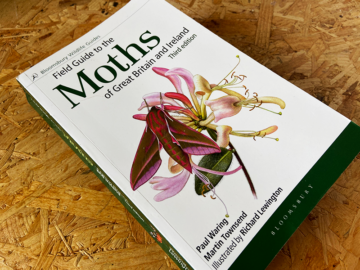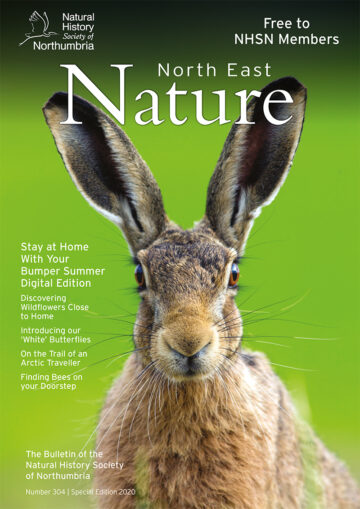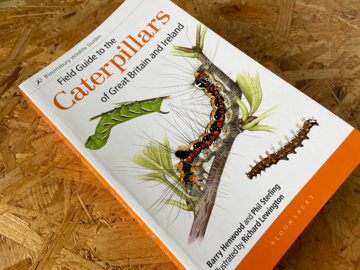As we continue to enjoy nature close to home, we’ve asked NHSN members to tell us about their favourite field guides for the garden or on nearby walks. In this post local naturalist Heather Devey recommends guides for moths and caterpillars.
Moths and Caterpillars
 Field Guide to the Moths of Great Britain and Ireland
Field Guide to the Moths of Great Britain and Ireland
By Paul Waring and Martin Townsend. Illustrations by Richard Lewington. 3rd ed. Bloomsbury Wildlife, 2017.
464 pp. 1700 colour artworks, 80 colour photos, and 800 distribution maps.
This is an essential guide for anyone interested in discovering and recording macro-moths; the larger of our night-time pollinators. Following from guidance in using the book, moth anatomy and ecology are described, prior to suggestions on field techniques in finding moths; such as baiting, light-trapping and the use of lures.
The third edition of this book, published in 2017, includes 10 additional species which were not present (or recorded) in Britain at the time of the book’s second publication in 2009, and also includes newly established identification features and biological aspects to help readers better identify species within this diverse group of invertebrates, which we are still learning so much about.
The guide is set out into family orders, with species-specific details included such as distribution maps (a new feature), field characters, larval food plants and – of much importance – flight season, with species illustrations neatly located in the centre of the book.
Learn more about this guide and others in the Field Guides series published by Bloomsbury Wildlife.
Field Guide to the Caterpillars of Great Britain and Ireland
By Phil Sterling and Barry Henwood. Illustrations by Richard Lewington. Bloomsbury Wildlife, 2020.
464 pp. 1700 colour artworks, 80 colour photos, and 800 distribution maps.
This much-anticipated extensive guide to caterpillars finally landed this year. As with most guides, the book first advises best applied use, before detailing methods of differentiating between caterpillars of different invertebrate orders, techniques in finding larvae, rearing suggestions, and fascinating examples of survival mechanisms such as crypsis and mimicry.
The larvae of most butterflies and macro-moths are included, with the guide set out into family groups, and distribution maps, habitats, food preferences and field notes featured for each species, with illustrations located in the centre of the book. The guide to food plants and associated larvae is particularly useful, especially for those new to the identification of Lepidoptera larvae.
Learn more about this guide and others in the Field Guides series published by Bloomsbury Wildlife.
 More field guides to inspire you
More field guides to inspire you
This post is an extended version of “Field Guides to Inspire You,” featured in our Summer 2020 Special Edition of North East Nature. This special digital-only issue is available to everyone.
See our full series of Field Guides blog posts for more recommendations.
